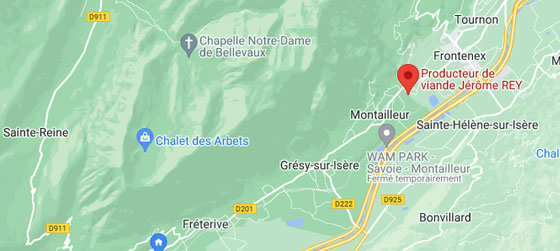The concept of the spiral as a metaphor for growth and development has long served as a powerful lens through which we understand the progression of creativity, evolution, and innovation. This article explores how the elegant form of the spiral, rooted deeply in nature, continues to influence human ingenuity—from ancient art and scientific principles to modern game design and digital entertainment.
Table of Contents
- The Natural Foundations of Creativity: Patterns and Principles in Nature
- From Nature to Innovation: The Evolution of Creative Ideas
- The Spiral in Cultural and Artistic Expressions
- The Modern Manifestation: Spirals in Gaming and Entertainment
- Non-Obvious Depth: The Psychological and Cognitive Dimensions of Spirals in Creativity
- Connecting the Dots: The Continuous Loop of Inspiration and Innovation
- Conclusion: Embracing the Spiral of Creativity for Future Innovation
The Natural Foundations of Creativity: Patterns and Principles in Nature
Nature exhibits recurring patterns that have profoundly inspired human creativity. Among these, the spiral stands out as a universal motif, visible in seashells, galaxies, and weather phenomena. For instance, the nautilus shell embodies a logarithmic spiral, illustrating a form of growth that maintains proportionality as it expands. Such patterns are more than aesthetic; they reveal underlying principles of biological evolution and the development of complex systems.
The process of biological evolution itself can be viewed as a form of spiral—an iterative cycle of variation, selection, and refinement. Each generation builds upon previous adaptations, creating a continuous, spiraling trajectory of development. This concept aligns with the mathematical idea of fractals—self-similar structures that repeat at different scales—highlighting how complex natural forms arise from simple recursive rules. Recognizing these patterns helps us understand the interconnectedness of natural systems and human innovations inspired by them.
From Nature to Innovation: The Evolution of Creative Ideas
Human ingenuity has often drawn directly from natural phenomena to spark technological advancements. A quintessential example is the kaleidoscope, invented in the early 19th century, which uses multiple reflections—a principle derived from natural symmetry and the repetitive, layered patterns found in crystals and snowflakes. This device exemplifies how understanding natural patterns can lead to new forms of visual entertainment and artistic expression.
Natural events like lightning have also influenced ideas surrounding volatility and randomness—concepts now fundamental in modern gaming and gambling. The unpredictability of lightning strikes inspired the development of random number generators, critical for creating fairness in digital games and simulations. Similarly, the portability of natural objects, such as the M&M’s candy designed for soldiers during World War II, exemplifies functional adaptation—translating natural or practical solutions into consumer products and gaming mechanics.
The Spiral in Cultural and Artistic Expressions
Throughout history, artists and cultures have employed spiral motifs to symbolize growth, eternity, and cyclical nature. Ancient Celtic art features intricate spiral patterns representing spiritual continuity, while Indian mandalas incorporate concentric spirals symbolizing the universe’s infinite cycles. These motifs serve as visual metaphors for life’s perpetual motion and transformation.
In modern design, digital interfaces leverage spiral and fractal patterns to enhance user engagement. For example, loading animations often feature spirals or circular motions that guide user focus and create a sense of continuity. Case studies of game design reveal that mimicking natural spirals—such as in the layout of levels or the animation of bonus features—can deepen immersion and emotional connection.
The Modern Manifestation: Spirals in Gaming and Entertainment
Spiral principles manifest vividly in contemporary gaming mechanics. Features such as cascading wins in slot machines or layered bonus rounds mimic natural spiral patterns, creating a sense of progression and increasing anticipation. These mechanics leverage our innate perception of spirals as symbols of growth and reward.
Volatility, akin to lightning’s unpredictability, influences game dynamics profoundly. High-volatility games feature rare but large payouts, exciting players with sudden, intense bursts of wins—paralleling the unpredictable power of natural phenomena. An illustrative example is Sweet Rush Bonanza, a modern slot game that integrates spiral-inspired visuals and layered mechanics to immerse players in a dynamic experience, exemplifying how natural forms inspire engaging gameplay.
Non-Obvious Depth: The Psychological and Cognitive Dimensions of Spirals in Creativity
Research shows that spiral patterns influence human perception, focusing attention and facilitating pattern recognition—a critical aspect of learning and problem-solving. The repetitive, self-similar nature of spirals can induce a meditative state, reducing cognitive load and fostering insight. For example, spiral structures in educational tools or puzzles can enhance memory retention and stimulate creative thinking.
Designing educational games that incorporate natural spiral patterns can promote engagement and cognitive development. Such approaches tap into our innate familiarity with spirals, making complex concepts more accessible and inspiring new ideas.
Connecting the Dots: The Continuous Loop of Inspiration and Innovation
Each stage of the spiral—natural inspiration, technological adaptation, artistic expression, and cognitive processing—feeds into the next, creating a cycle of ongoing innovation. Recognizing natural patterns not only enhances design but also supports sustainable development by aligning technological progress with innate human and ecological principles.
Looking ahead, integrating natural spiral patterns into emerging technologies—such as biomimetic robotics or fractal-based algorithms—offers promising avenues for innovation. In game development, this can translate into more immersive, intuitive experiences that resonate with our deep-seated perceptions of growth and harmony.
Conclusion: Embracing the Spiral of Creativity for Future Innovation
The spiral metaphor encapsulates the interconnectedness of nature, culture, and technology. By observing natural patterns, we can unlock new pathways for creative expression and technological advancement. From ancient art to cutting-edge game mechanics, the spiral remains a timeless symbol of growth, renewal, and endless possibility.
« Nature’s spirals remind us that progress is not linear but a continuous ascent—each revolution bringing us closer to innovation and understanding. »
Modern examples like Sweet Rush Bonanza demonstrate how these timeless principles inspire engaging, dynamic entertainment that continues the spiral of creativity into the digital age. Embracing this pattern can guide us toward sustainable and inspired future developments.

